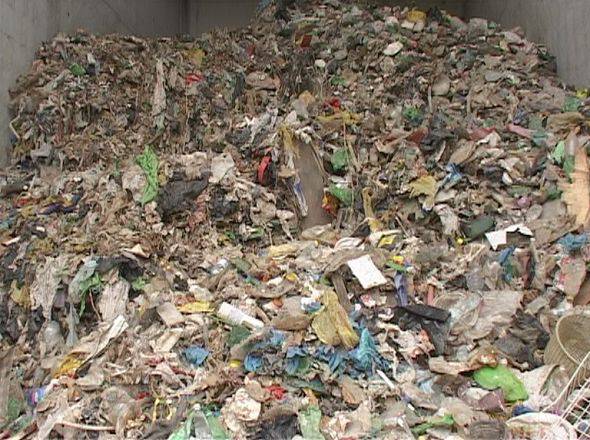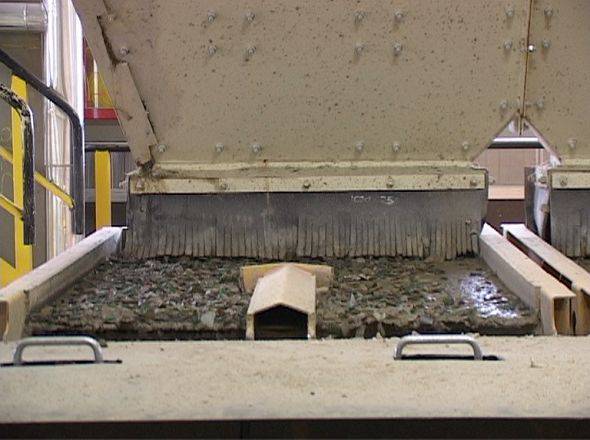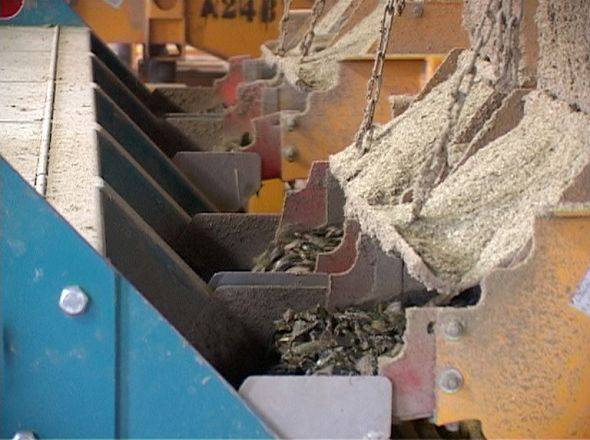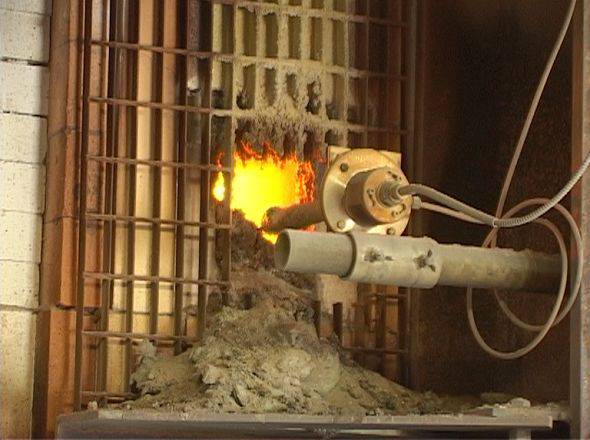Description
In Italy, the consumption by the glass industry of scraps of glass from separation of solid urban waste (ecological scraps), is about one million tons a year. These scraps, appropriately treated, are used prevalently for the production of half white or coloured hollow ware glass, in varying proportions which, in some cases, can exceed 80% in weight of the total vitrifiable compound.
Collection primarily involves hollow ware glass and partly comes from containers put into the so-called bell bins made of glass resin located in numerous cities and partly from separate collection of rubbish in particular centres (industry, communities, public bodies etc.).
Glass from separation collection cannot be recycled as it is. It must undergo various treatments to take out the quantity - which can be significant - of impurities that it contains (paper, plastic, ceramic materials, ferrous and other metallic materials).
This can be done using different systems, partly manual, but which are ever-more automated. In the first phase, foreign bodies of relatively large dimensions are taken out and the containers of different colours are separated; then they are washed with water to remove different substances (paper, cork, plastic, dirt etc.). Some of the metallic material is removed through the use of magnetic devices; the non-metallic ones are removed, partly, by manual means.
The product is then ground and sieved (to keep the foreign parts which are not crumbled), by air suction (to remove light impurities), a further deferrization (to keep ferrous components on magnets) and with metal detectors (to separate the non-magnetic ones).
After these treatments, which can be repeated several times, impurities may be present in the most minute of fractions (stones, ceramic products, metals), at a quantity of less than 1%.
It is vital to know the quality characteristics of the glass scraps, considering the fact that it is present, in vitrifiable mixtures, in ever-increasing concentrations.
The problems deriving from such a high use of scrap, can be:
- infusions in the glass, originating from the presence of ferrous and non-ferrous metallic material in the scrap (the non-ferrous ones are also responsible for corrosion phenomena of parts of the furnace), ceramics and refractory material;
- difficulty in controlling the fusion as a consequence of the presence of organic polluters;
- presence of polluters like halides and heavy metals like lead, cadmium, mercury, chrome (deriving from second workings and thus completely foreign to the productive cycle of industrial hollow ware glass) which, in addition to being inadvisable for the production of glass for foodstuffs, tend to evaporate and worsen the quality of air emissions.




